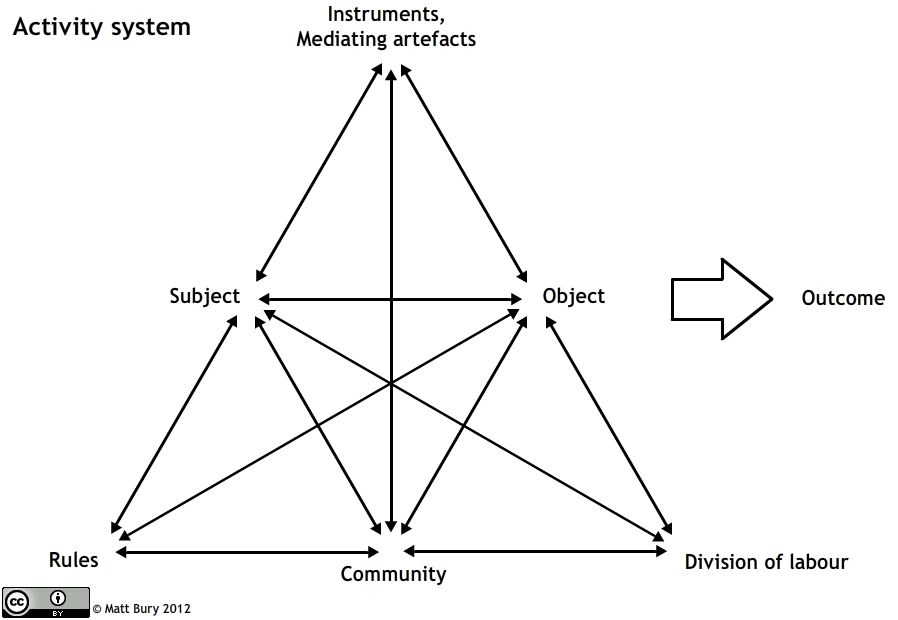A Magic Activity Network: Overview

While any activity network involves numerous dimensions that can, at any point, reflect more than one of the standard categories of the activity system, we recognize the variables described below as playing important and clearly recognizable roles in the enactment of our particular activity.
It is also worth noting that there are several valid methods to analyze an activity network like Magic that emphasize nonhuman actors as equally as human actors, including actor-network theory and social network analysis (Frith, 2014). However, we choose to continue activity theory traditions that focus primarily on human behaviors (Kaptelinin & Nardi, 2006), given our interest in learning about how one or more Magic players identify, respond to, adopt, adjust, and otherwise engage the game’s protocols through play.
Similarly, we recognize the multiperspectival nature of an activity network, since different individuals involved in the activity "tend to perceive different aspects of it and consequently tend to pulse the shared object in different ways, with different tempos, using different configurations of the resources" (Spinuzzi, 2015, p. 6). Accordingly, our collaborative description of the network and its components here will inevitably only identify a subset of their qualities and effects.